REPRINTED WITH PERMISSION FROM THE CHRISTIAN SCIENCE MONITOR
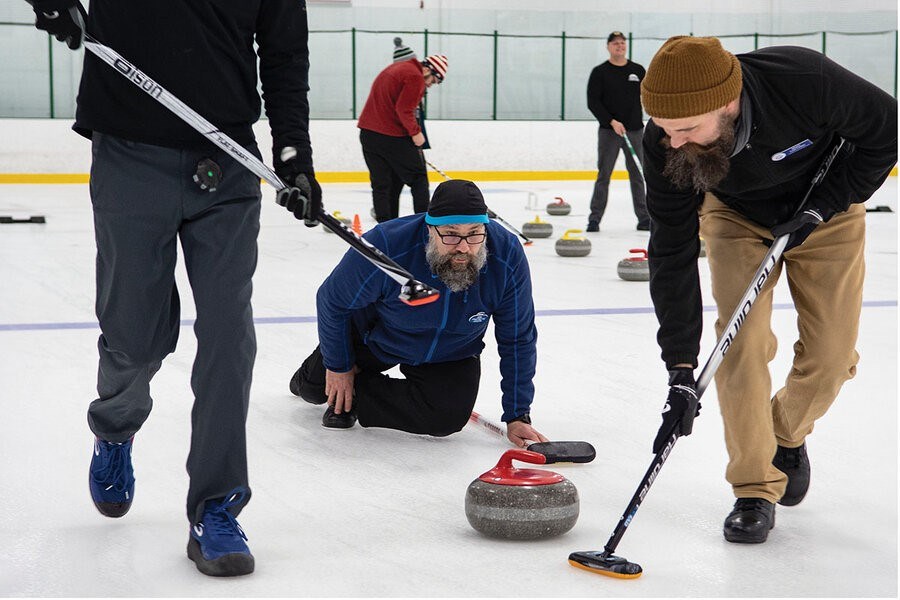 Ocean State players Don Frechette (on knees) delivers a stone as Brad Caetano sweeps during a curling league match. Alfredo Sosa/Staff
Ocean State players Don Frechette (on knees) delivers a stone as Brad Caetano sweeps during a curling league match. Alfredo Sosa/Staff
February 24, 2023
At a frigid ice rink in Wayland, Massachusetts, members of the Broomstones Curling Club look for a clean push-off that will send a 44-pound stone gliding more than 100 feet across the ice and closest to the target, called the “house.”
“Some say it’s like bocce, but it’s more like playing chess,” says Rich Collier, vice president of the Broomstones. “I might do something now [that will] benefit three or four shots from now. It’s all about building it up and sequencing.”
Curling, which started in 16th-century Scotland, may look puzzling to the uninitiated. Two teams take turns making throws, with their respective teammates sweeping in front, so the stone will travel farther. (The stone actually curves, or “curls,” giving the sport its name.) The team with the stones closest to the center wins the round. There are 8 to 10 rounds in a full match and the team with the most points wins the match.
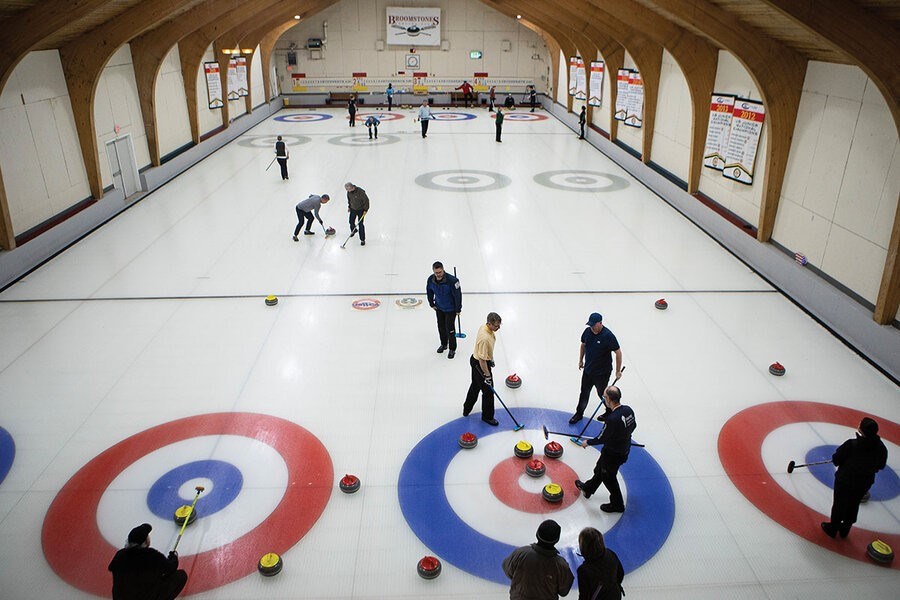 MELANIE STETSON FREEMAN/STAFFAn overview of the rink shows four curling lanes at Broomstones Curling Club in Wayland, Massachusetts. The bull’s-eye targets are known as the house. Teams of players throw the stones from one end to the other, trying to land as close as possible to the center.
MELANIE STETSON FREEMAN/STAFFAn overview of the rink shows four curling lanes at Broomstones Curling Club in Wayland, Massachusetts. The bull’s-eye targets are known as the house. Teams of players throw the stones from one end to the other, trying to land as close as possible to the center.
Since it was added to the Olympic Winter Games in 1998, the sport has grown in popularity. Today, there are more than 80 clubs in the United States. At Broomstones, the wait for a membership slot is five years.
After the match in Wayland, both teams meet in the lodge for refreshments. The evening ends in smiles and handshakes. “The easiest part about curling is having fun,” says Mr. Collier. “The hardest part is not taking yourself too seriously.”
In 2009, a group of dedicated curlers who couldn’t travel to Broomstones opened the Ocean State Curling Club in Smithfield, Rhode Island. “The one thing people should know about curling is that anyone can do it,” says Dave Rosler, the club’s president. He says new players can be curling in a league after two hours of instruction.
“It’s just a really social sport,” Mr. Rosler says. “I enjoy losing at curling more than I enjoy winning at almost any other sport.”
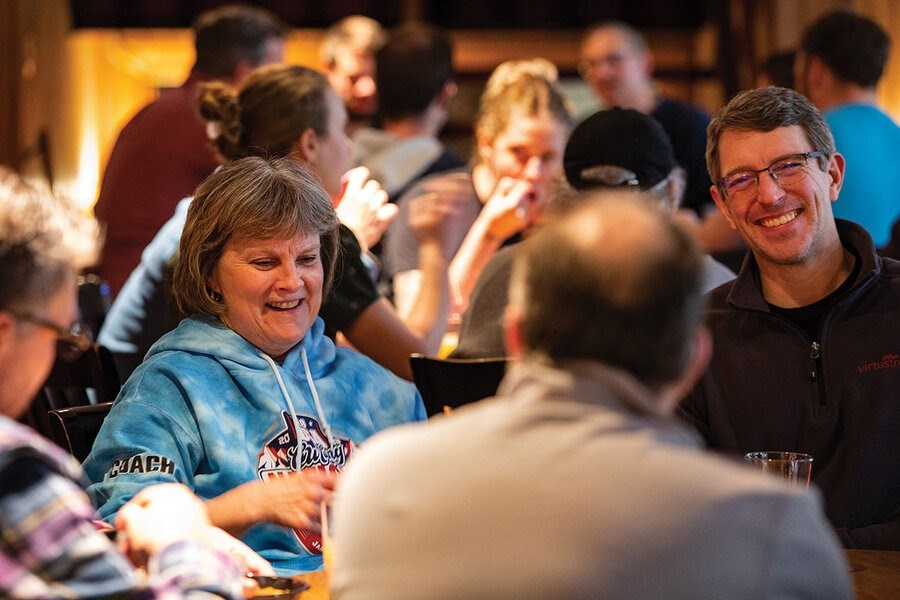 MELANIE STETSON FREEMAN/STAFFBroomstones curlers gather to socialize after their game on a weekday evening. Participants say the camaraderie between players is one of the best parts of the sport.
MELANIE STETSON FREEMAN/STAFFBroomstones curlers gather to socialize after their game on a weekday evening. Participants say the camaraderie between players is one of the best parts of the sport.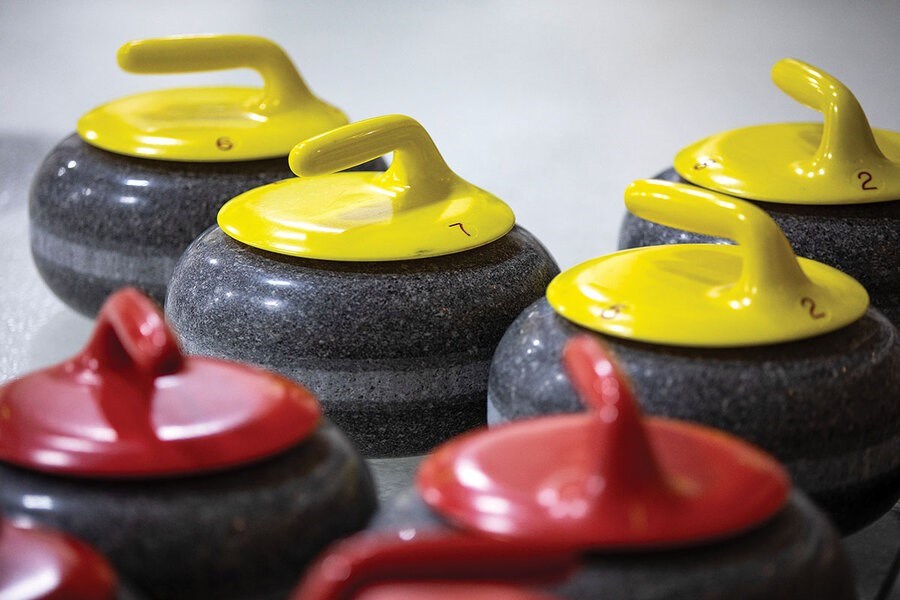 MELANIE STETSON FREEMAN/STAFFCurling stones – made of granite and weighing about 40 pounds – are ready for use.
MELANIE STETSON FREEMAN/STAFFCurling stones – made of granite and weighing about 40 pounds – are ready for use.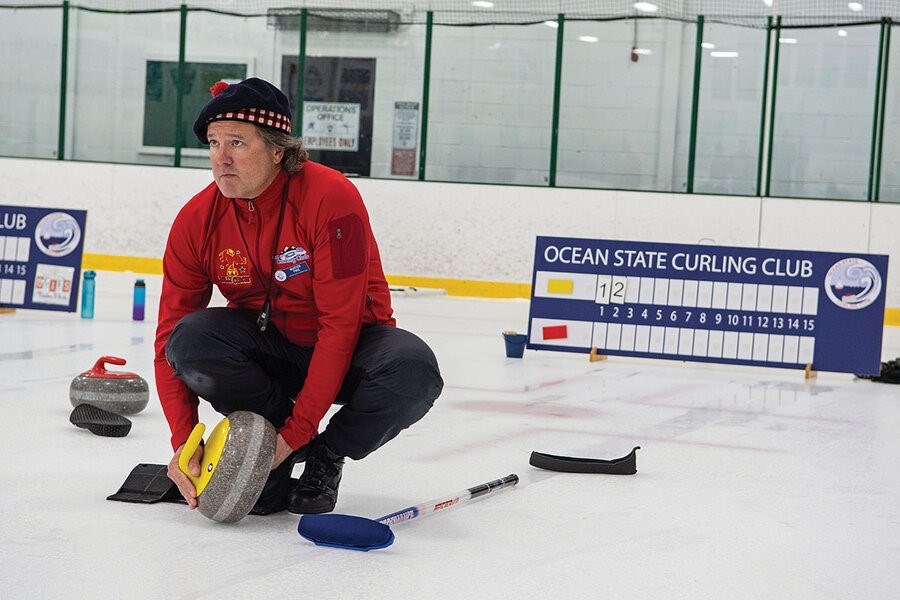 ALFREDO SOSA/STAFFBuster Pike of Ocean State cleans the bottom of a stone during competition.
ALFREDO SOSA/STAFFBuster Pike of Ocean State cleans the bottom of a stone during competition.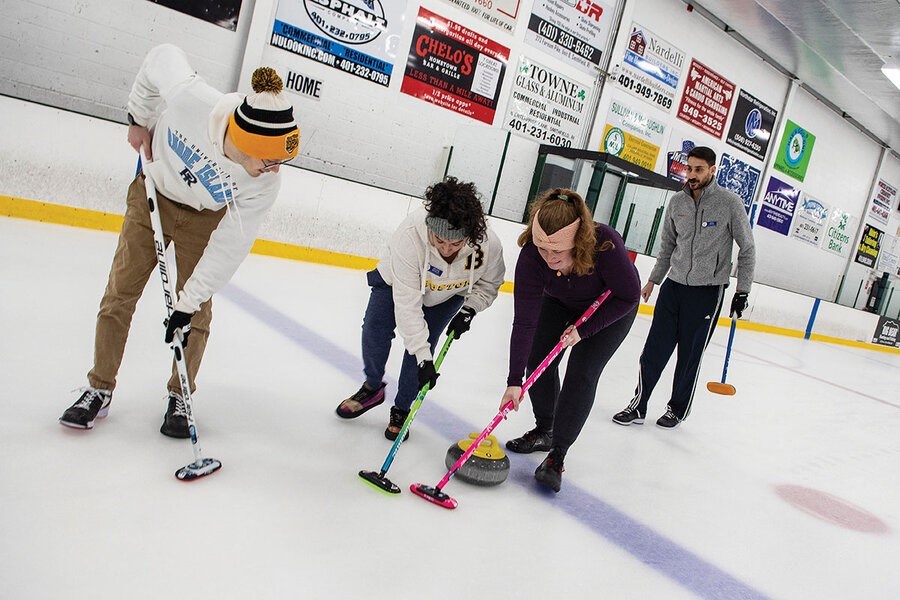 ALFREDO SOSA/STAFFOcean State Curling Club players (left to right) Eric Stamp, Melissa Morales, Layla Ferland, and Seth Ribeiro sweep hard to make sure the stone makes it over the line during a match. They listen for instructions from their captain, known as the skip, from the far side of the rink. Sweeping reduces friction, enabling the stone to travel farther.
ALFREDO SOSA/STAFFOcean State Curling Club players (left to right) Eric Stamp, Melissa Morales, Layla Ferland, and Seth Ribeiro sweep hard to make sure the stone makes it over the line during a match. They listen for instructions from their captain, known as the skip, from the far side of the rink. Sweeping reduces friction, enabling the stone to travel farther.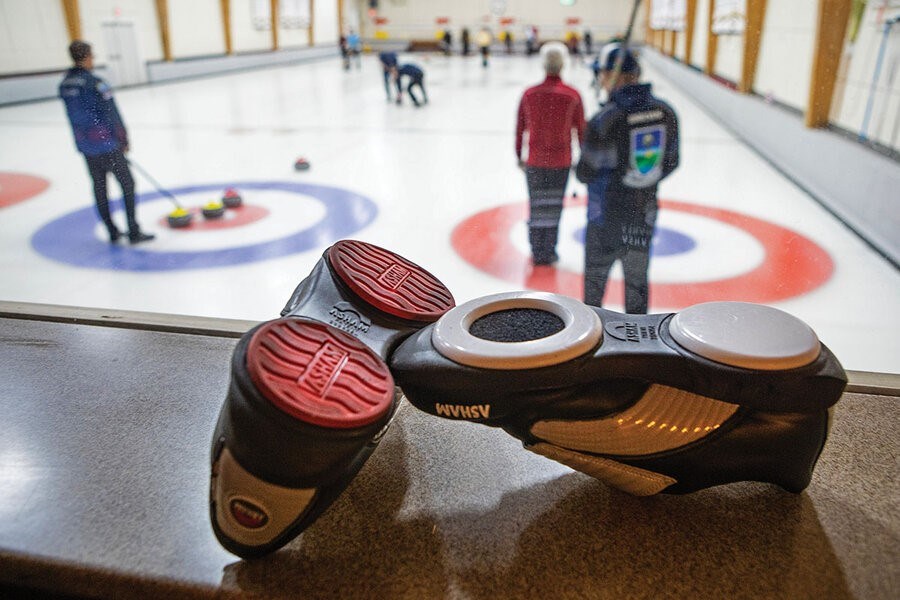 MELANIE STETSON FREEMAN/STAFFA curler’s shoes show the types of soles necessary for the sport: one surface sticks to the ice, the other allows sliding.
MELANIE STETSON FREEMAN/STAFFA curler’s shoes show the types of soles necessary for the sport: one surface sticks to the ice, the other allows sliding.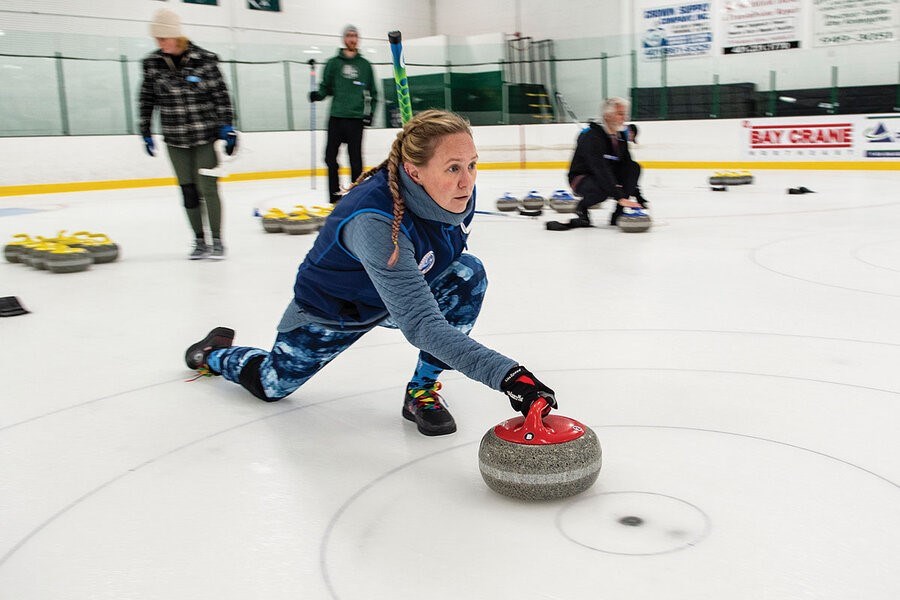 ALFREDO SOSA/STAFFOcean State Curling Club player Brianne Straus delivers a stone in a league match on Jan. 11 in Smithfield, Rhode Island.
ALFREDO SOSA/STAFFOcean State Curling Club player Brianne Straus delivers a stone in a league match on Jan. 11 in Smithfield, Rhode Island.
Related stories
Page created on 3/1/2023 9:32:47 AM
Last edited 3/1/2023 9:44:29 AM
